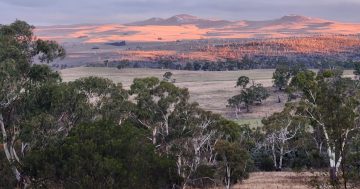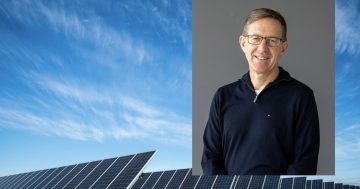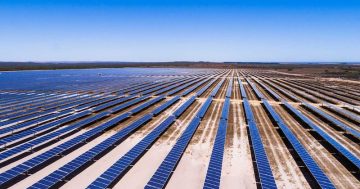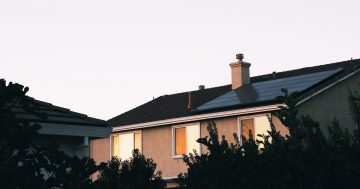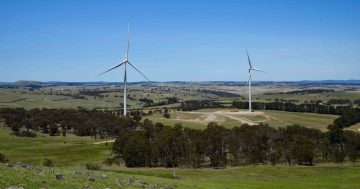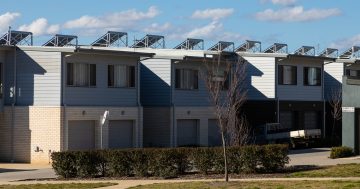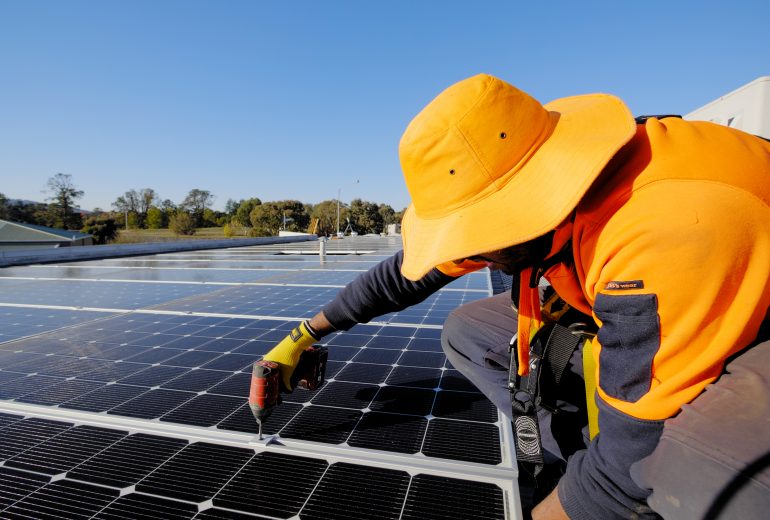
Over 1500 Canberrans are employed in the renewables sector – but they aren’t all involved in installing solar panels. Photo: File.
A total of 1558 Canberrans are currently employed by more than 250 employers in the renewables sector, according to a new report from the ACT Renewables Hub.
It’s also a sector that continues to experience rapid growth, despite the ACT’s inability to house major manufacturing or industry projects.
Among the survey’s findings was that 40 per cent of the renewable energy jobs are in the public sector or policy development, and 24 per cent are in research and training.
Another 22 per cent of these jobs are in solar panel installations, sales and energy audits.
ACT Renewables Hub manager John Grimes, who is also the Chief Executive of the Smart Energy Council, the independent body for the Australian smart energy industry, said the findings prove the renewables industry is thriving in the ACT.
He noted it’s a sector that’s experienced rapid growth, with the number of jobs more than doubling in three years. ABS census data from 2018 showed there were only 600 jobs in the local renewables industry.
Mr Grimes expects to see similar or even quicker growth in the coming years as the transition to a zero-carbon economy takes hold.
He’s realistic about Canberra never becoming a significant manufacturing hub, but he said the Territory could become the “knowledge capital”, leveraging the public, private and tertiary education sectors.
Mr Grimes said there had been particular interest in finding out what full-time, long-term jobs had been created since 2018.
“When you build a solar farm or a wind farm, there’s the civil engineering work and construction, but then there’s a lower number of jobs that flow on from there as well.”
But the report found jobs available within the sector are broader than what might immediately come to mind – not everyone is installing solar panels.
“We were particularly interested to see this diversity of jobs,” Mr Grimes said.
Canberrans are working in roles such as selling electric vehicles, researching new solar cells, bidding energy from wind farms into the energy market, undertaking home audits and assessing smart energy funding applications.
Others may work at the Royalla Solar Farm as a technician or on building and running the renewable hydrogen refuelling station.
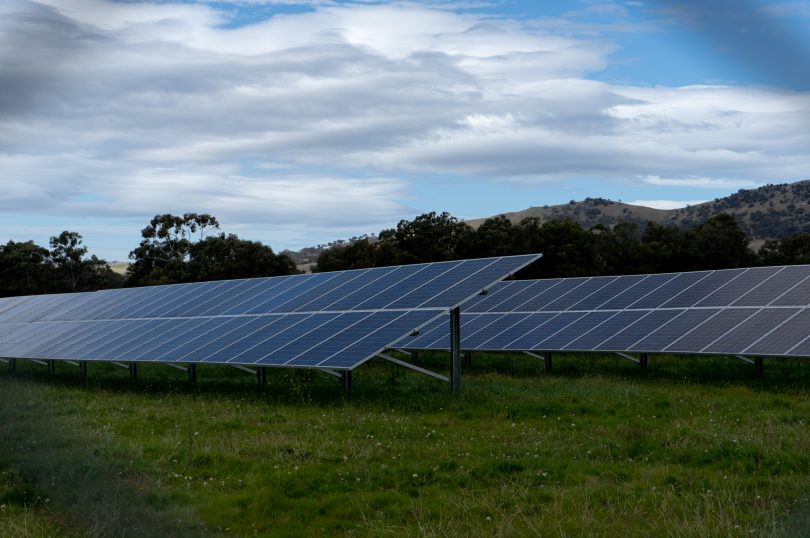
Major projects like building a solar farm lead to immediate jobs, but Mr Grimes is more interested in the subsequent long-term growth. Photo: Dominic Giannini.
“What we’re seeing is an ecosystem emerging which is starting to become self-sustaining,” Mr Grimes said. What this means is that the local renewables sector is beginning to require less government intervention to ensure it is profitable.
He noted the ACT Government had initially shown “real leadership”, but now it’s about “letting the market take care of itself”.
Mr Grimes said this is really important as Australia makes its transition to clean energy over the coming years.
“We need a good economic outcome as well as a good environmental one.”
The report found 64 per cent of employers are from the public sector while 36 per cent are from the private sector.
Among the 250 employers identified in the sector, the Clean Energy Regulator (CER) was the largest. It employs 360 people, although the ANU Institute for Climate, Energy, Disaster Solutions (ANUICEDS) was a close second – employing 300.
The local and federal governments were also both major employers, with the Australian Government employing 112 people and the ACT Government employing 100 people.
The CSIRO employs 50 people while the Australian Renewable Energy Agency (ARENA) employs 45.
Currently, more than 60 job vacancies are listed with the Territory’s major recruitment agencies.
Neoen, ITP Renewables, CWP Renewables, Reposit Power, Global Power Generation, and Zepben were the top five employers in the private sector.
Mr Grimes said it was pleasing to see this increasing engagement from the private sector in the industry.












